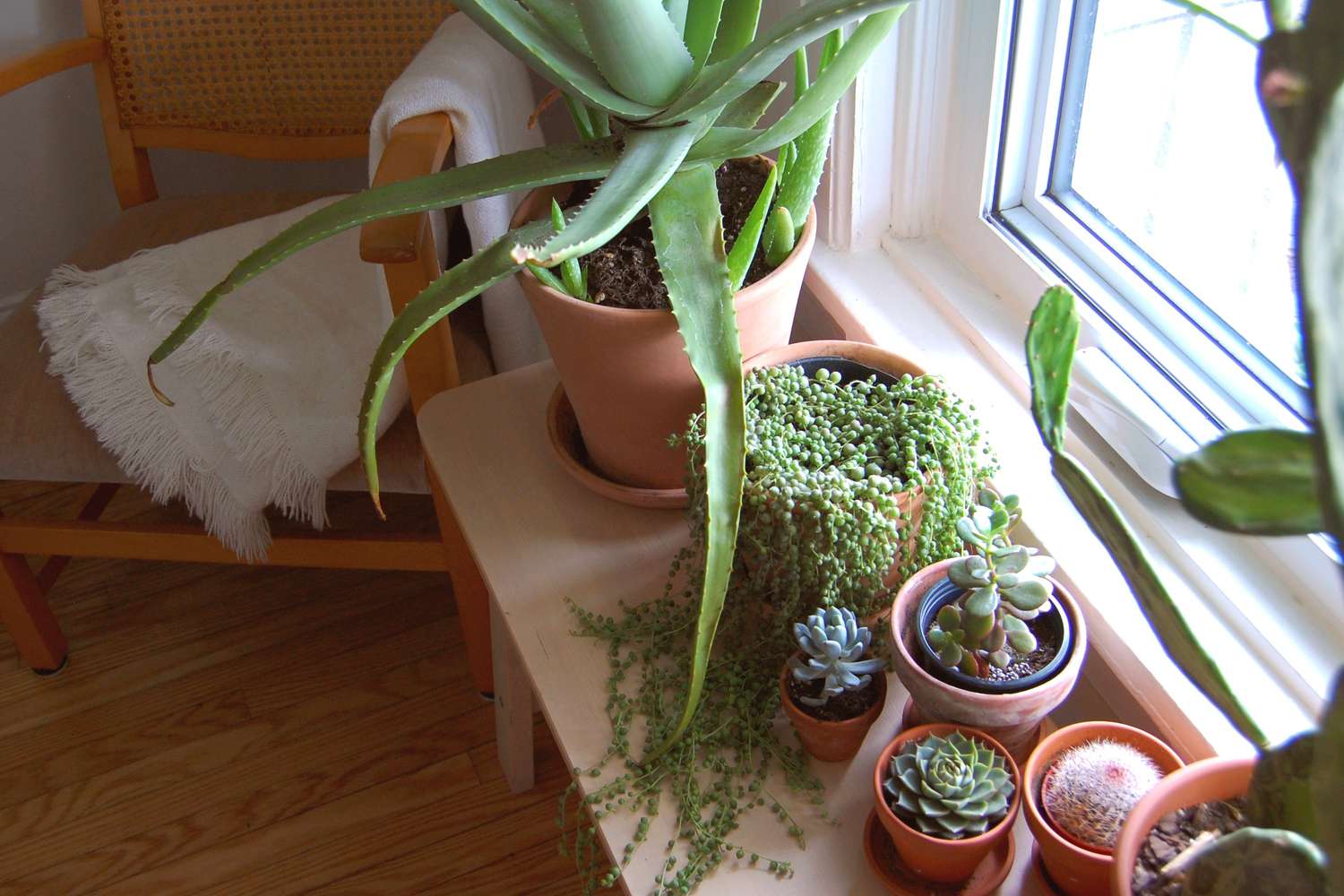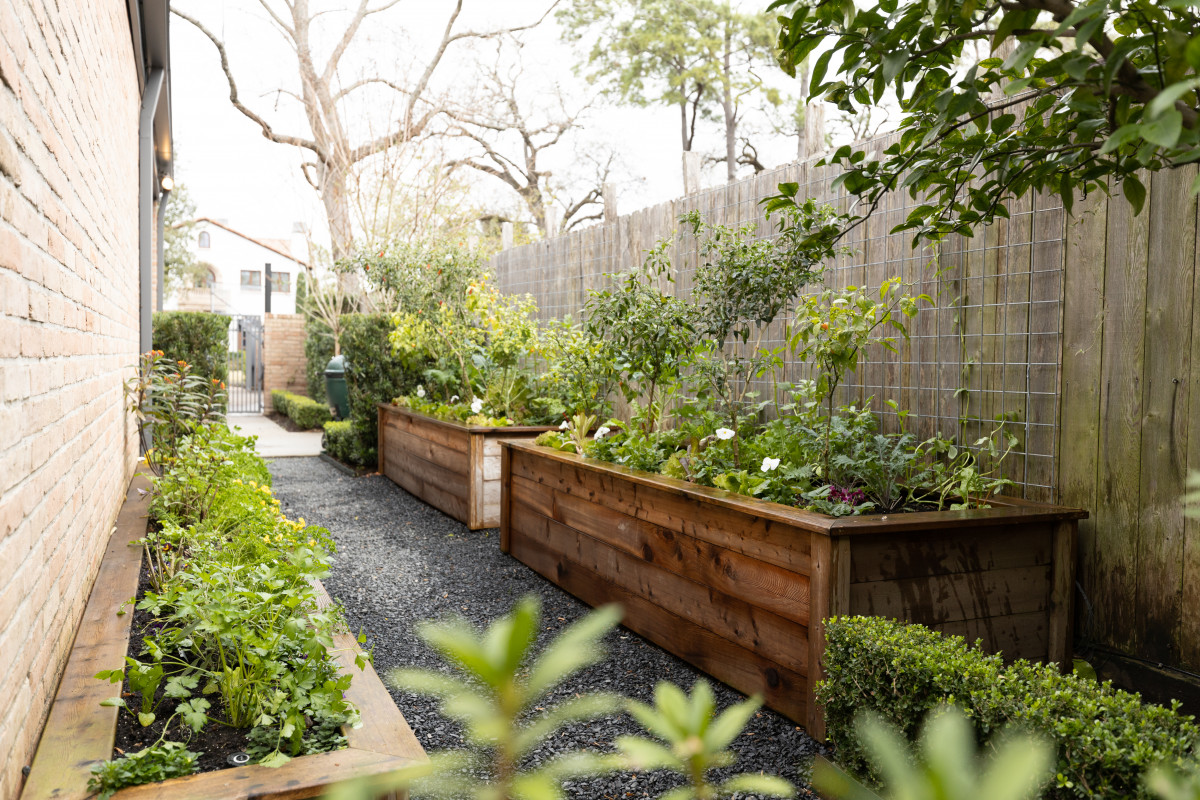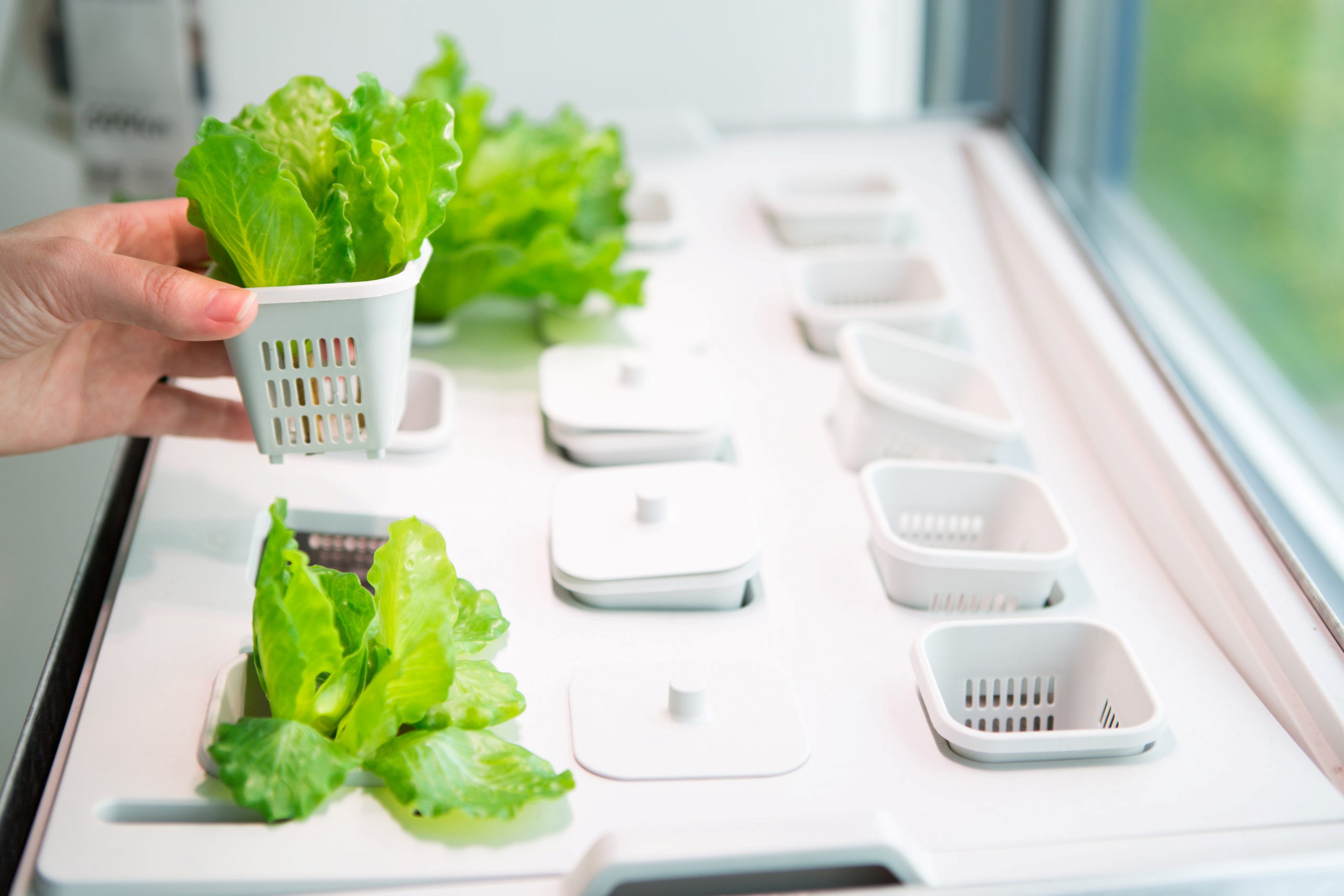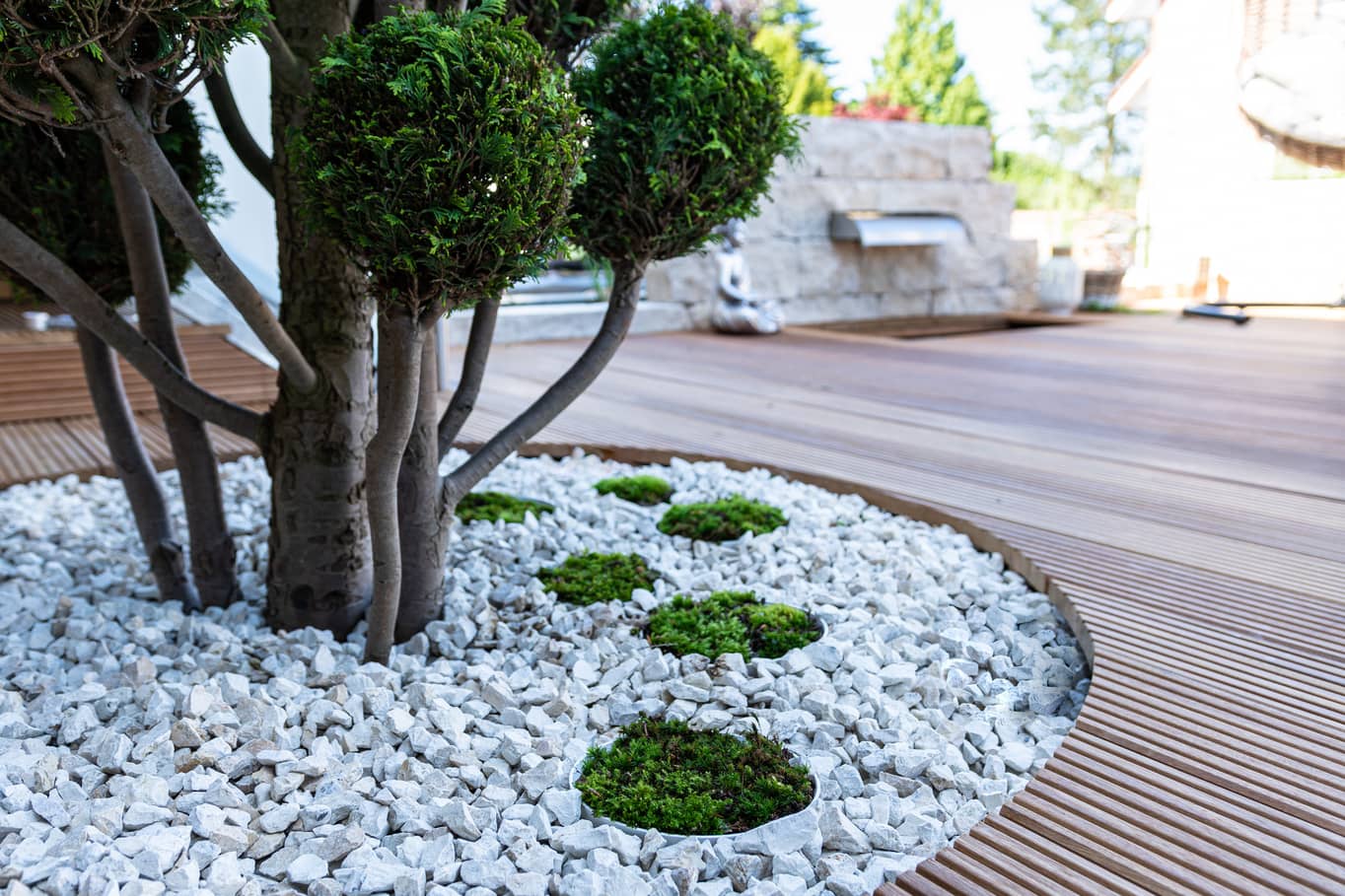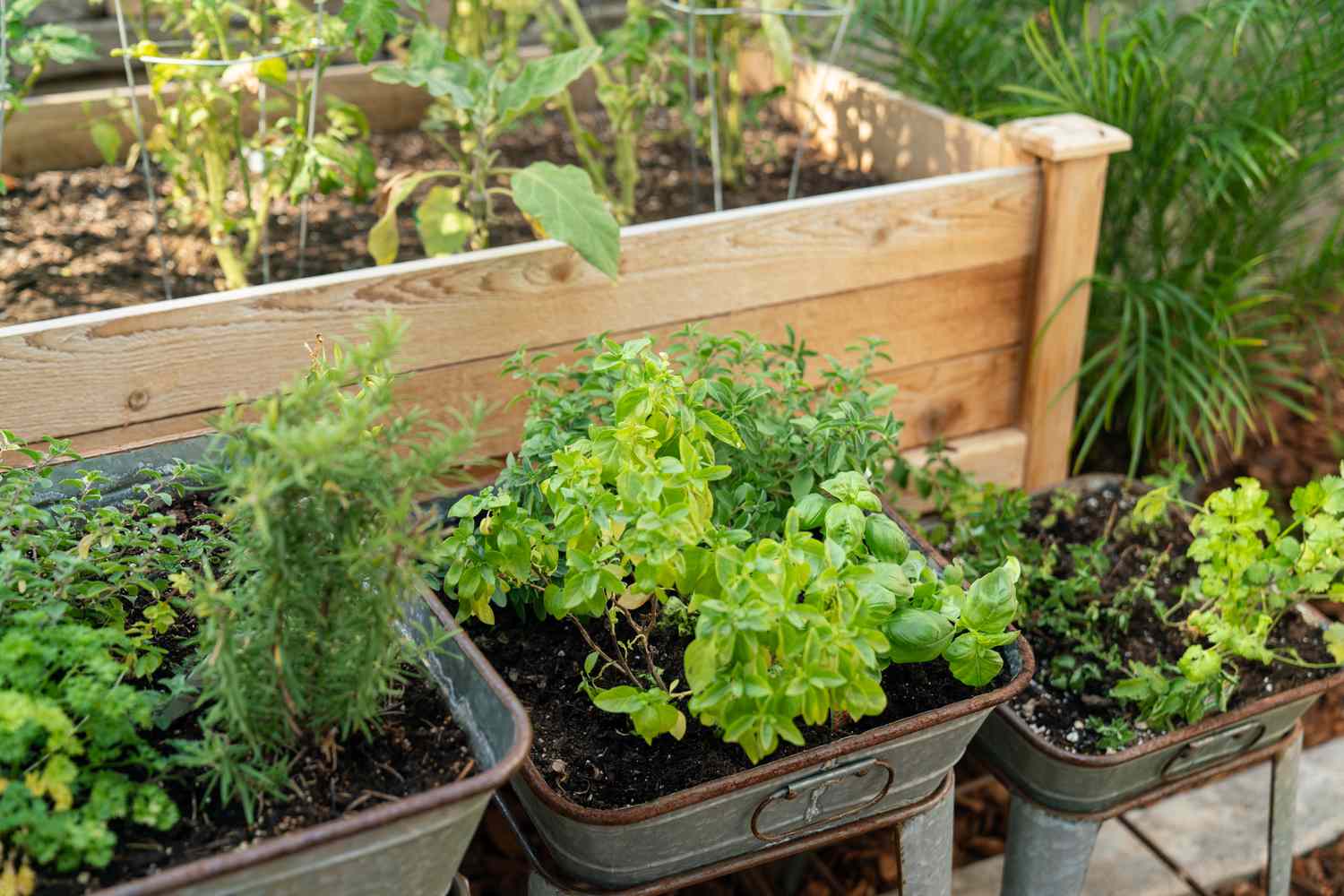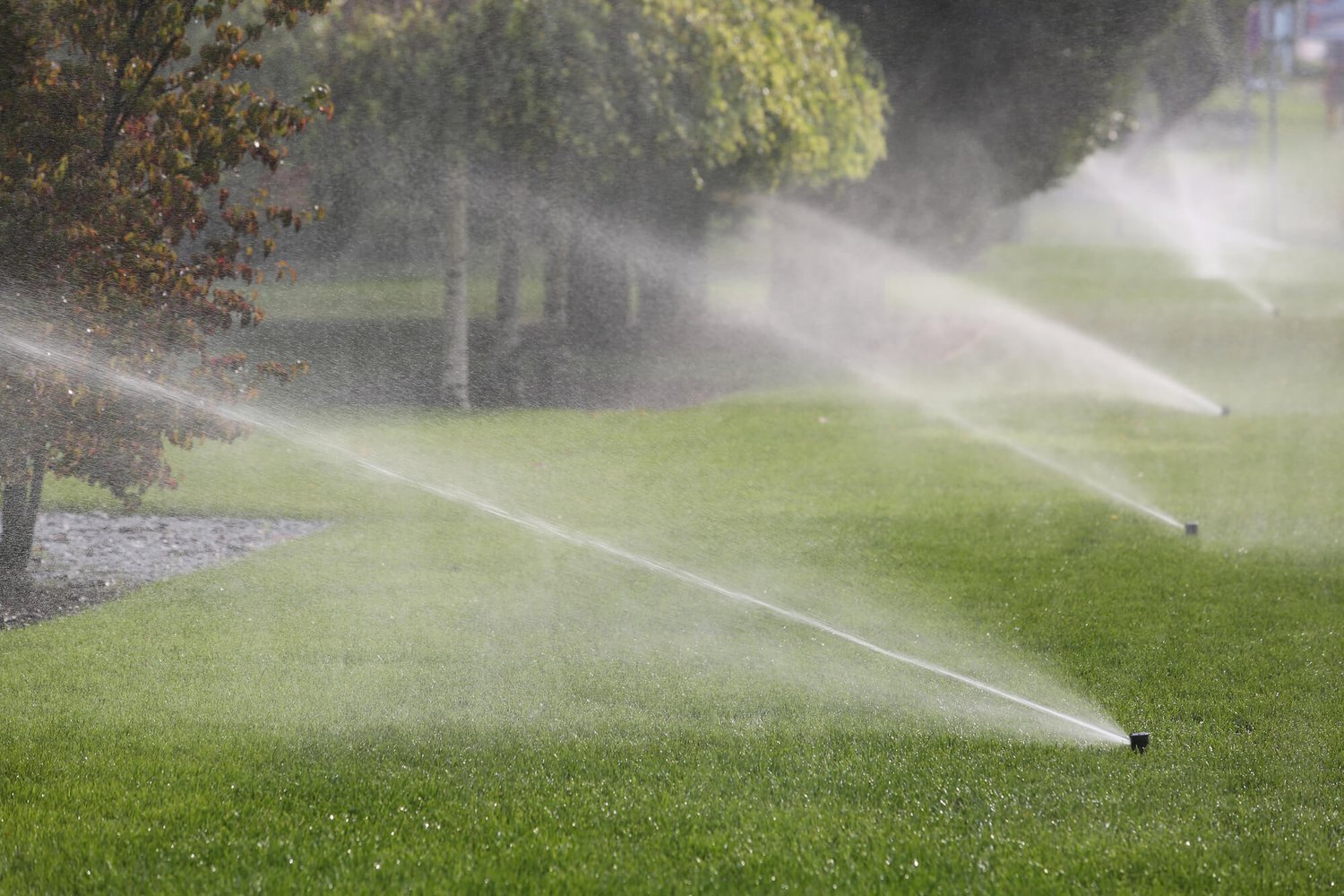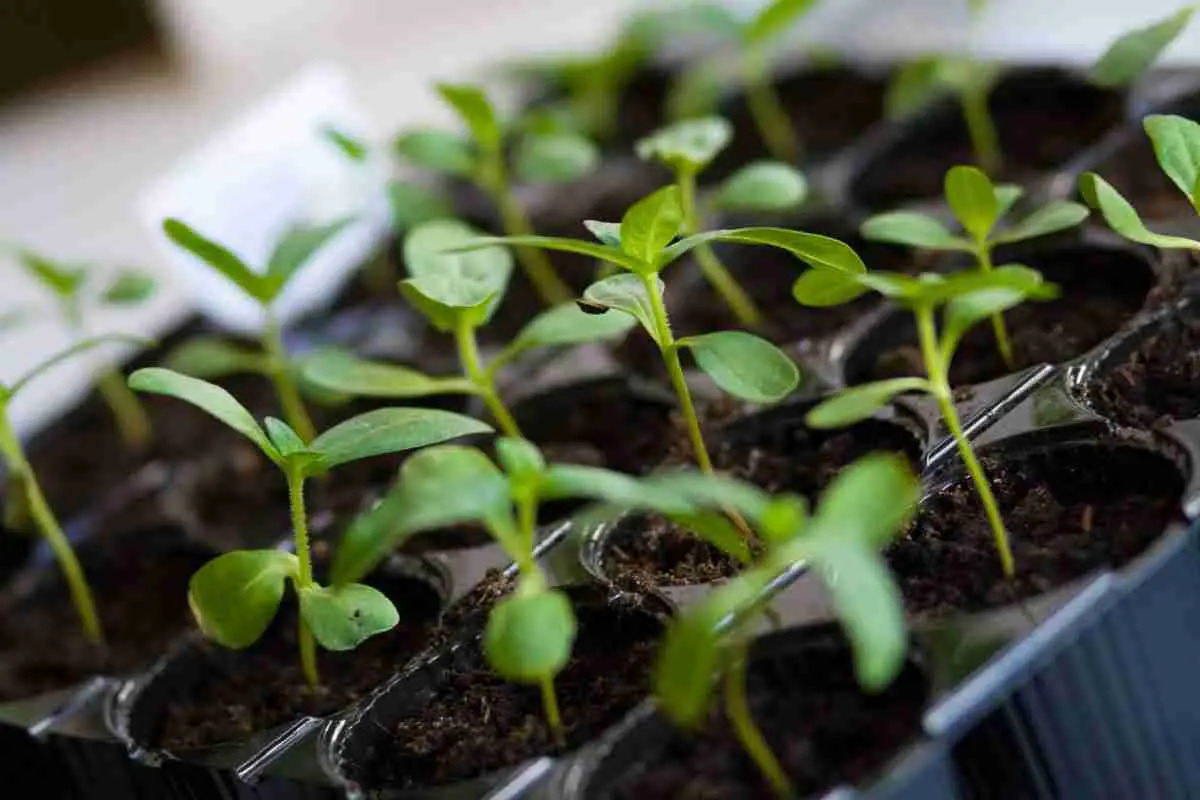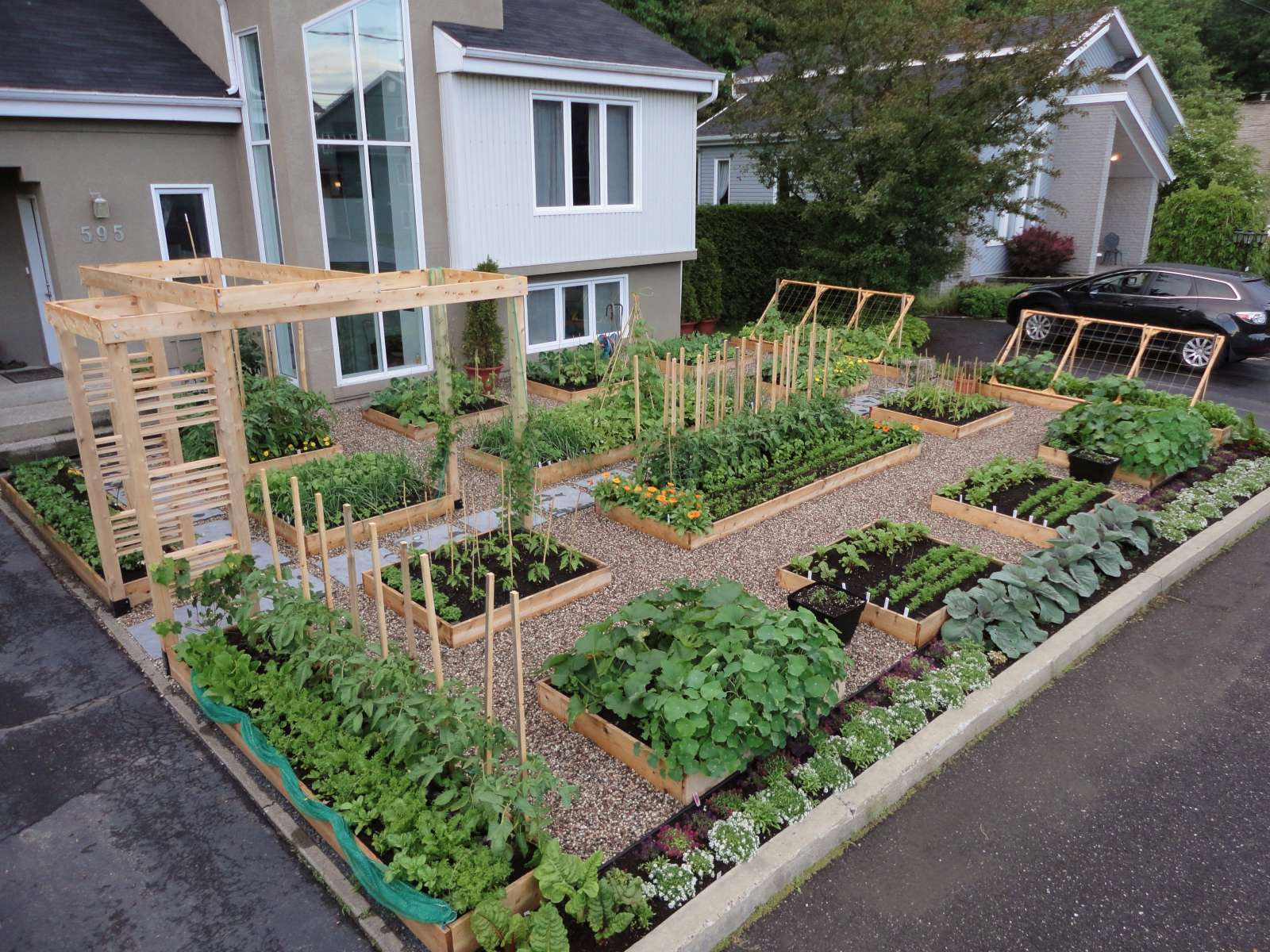Home>Gardening Basics>Understanding Soil>How Much Topsoil Do I Need For Raised Bed
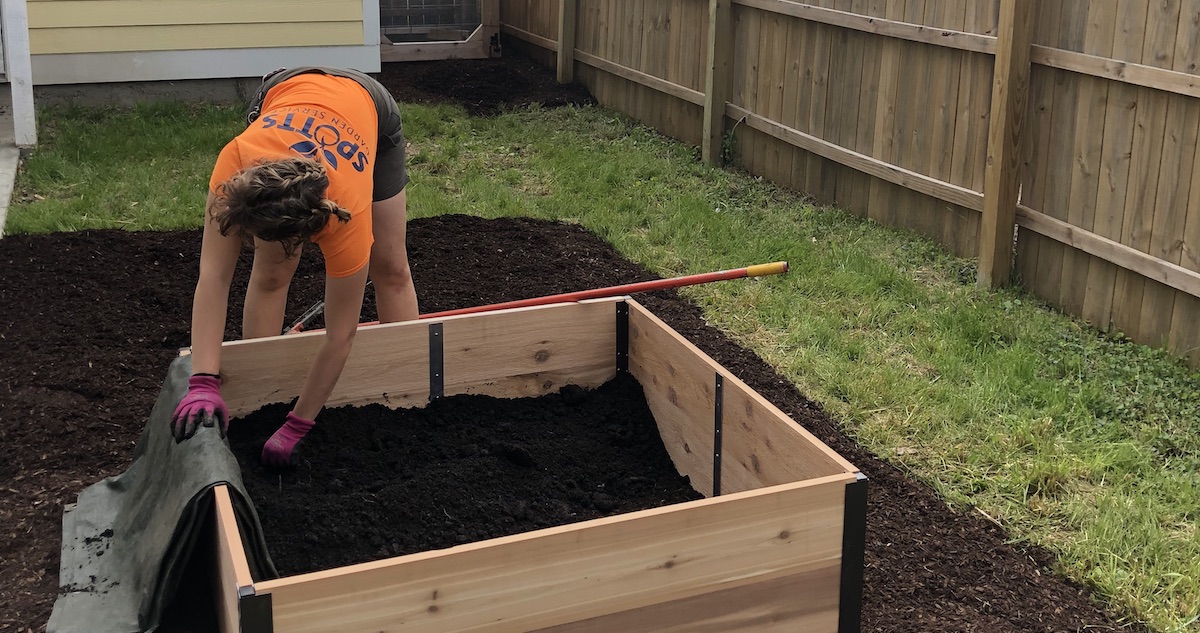

Understanding Soil
How Much Topsoil Do I Need For Raised Bed
Modified: February 9, 2024
Find out how much topsoil you need for your raised bed by understanding soil. Maximize your garden's potential with the right amount of topsoil.
(Many of the links in this article redirect to a specific reviewed product. Your purchase of these products through affiliate links helps to generate commission for Chicagolandgardening.com, at no extra cost. Learn more)
Table of Contents
Introduction
Welcome to the world of raised bed gardening! Whether you are a seasoned gardener or just starting out, the concept of raised beds can greatly enhance your gardening experience. One crucial aspect of creating successful raised beds is the quality and quantity of topsoil used. In this article, we will dive into the importance of topsoil in raised beds and guide you on how to determine the right amount of topsoil needed for your project.
Raised beds are garden beds that are elevated from the ground, typically constructed with a frame made of wood, metal, or other materials. They are becoming increasingly popular among gardeners due to their numerous advantages. In a raised bed, you have more control over the soil, water drainage, and overall growing conditions, which can lead to healthier plants and higher yields.
Topsoil plays a critical role in the success of your raised bed. It is the upper layer of soil that is rich in organic matter, nutrients, and beneficial microorganisms. This nutrient-rich layer provides a fertile environment for plants to grow and thrive. By using quality topsoil, you can create an ideal foundation for your plants and give them the best chance to flourish.
Now that you understand the importance of topsoil in raised beds, let’s delve into the factors you need to consider when determining the quantity of topsoil required for your project. By calculating the right amount of topsoil, you can ensure that your raised bed has the proper depth for optimal plant growth.
What is a raised bed?
A raised bed is a gardening technique that involves creating a defined and elevated area for planting crops or flowers. Unlike traditional ground-level gardens, raised beds are constructed above the native soil and often enclosed within a frame or boundary.
There are various materials you can use to build a raised bed, such as wood, concrete blocks, or even recycled materials like old tires. The dimensions and shape of the bed can also vary, depending on your preference and available space.
One of the main benefits of raised beds is the ability to have complete control over the soil quality. By filling the bed with a specific type of soil, you can create an ideal growing environment for your plants. This is particularly advantageous if you have poor soil conditions in your garden, such as heavy clay or sandy soil.
Another advantage of raised beds is the improved drainage they offer. By elevating the bed, excess water can drain more effectively, preventing waterlogged soil and root rot. This is especially useful in areas with heavy rainfall or poor drainage.
Additionally, raised beds can help you manage weeds and pests more efficiently. By containing the growing area, you can easily install barriers or add weed suppressant materials to minimize weed growth. You can also implement physical barriers to deter pests like rabbits or slugs from accessing your plants.
Lastly, raised beds can be beneficial for those who have physical limitations or disabilities. The elevated height reduces the need for bending or kneeling, making it more accessible and comfortable for gardeners of all abilities.
Now that you have a better understanding of what raised beds are and their advantages, let’s explore the importance of topsoil in creating successful raised beds.
Benefits of raised beds
Raised beds offer a wide range of benefits that can improve your gardening experience and the health of your plants. Let’s take a closer look at some of the key advantages:
- Improved soil quality: One of the biggest advantages of raised beds is the ability to fill them with high-quality soil. You can customize the soil composition to meet the specific needs of your plants, ensuring optimal growth and productivity. This is particularly beneficial if your native soil is of poor quality.
- Enhanced drainage: Raised beds provide excellent drainage as they are elevated from the ground. This is particularly advantageous in areas with heavy rainfall or compacted soils, as excess water can easily drain out, preventing waterlogged roots and fungal diseases.
- Reduced weed growth: By filling a raised bed with quality soil and a weed-free growing medium, you can minimize the presence of weeds. The defined boundaries of the bed also make it easier to spot and remove any weeds that do appear.
- Disease control: Raised beds can help prevent the spread of soil-borne diseases that commonly affect plants. Since the soil is contained within the bed, diseases are less likely to spread to neighboring plants, resulting in healthier crops.
- Better accessibility: The elevated height of raised beds makes gardening more accessible for everyone, especially those with mobility issues or back problems. The reduced need for bending and kneeling can alleviate strain on the body, making it more enjoyable and comfortable to tend to your plants.
- Extended growing season: Raised beds tend to warm up faster in the spring, allowing for an earlier start to the growing season. The elevated position also prevents the soil from cooling down as quickly in the fall, providing an extended period for growing crops.
- Maximized space utilization: Raised beds make efficient use of limited space. They can be designed in various sizes and shapes, allowing you to fit more plants into a smaller area. This is particularly useful for urban or small-scale gardening.
- Aesthetically pleasing: Raised beds add a visually appealing element to your garden. With their neat and organized appearance, they can enhance the overall look of your outdoor space, adding a touch of beauty and structure.
With all these benefits, it’s clear that raised beds are an excellent choice for both novice and experienced gardeners. Now that we understand the advantages of raised beds, let’s explore why topsoil is crucial for their success.
Importance of topsoil in raised beds
Topsoil plays a vital role in the success of your raised bed garden. It is the uppermost layer of soil, rich in organic matter, nutrients, and microorganisms. Here’s why topsoil is essential for creating a thriving raised bed:
- Nutrient-rich foundation: Topsoil is teeming with essential nutrients that plants need for healthy growth. It contains a balanced mix of nitrogen, phosphorus, potassium, and other micronutrients necessary for robust plant development. By using quality topsoil, you provide your plants with a nourishing foundation for optimal growth.
- Retains moisture: Topsoil has excellent water retention properties. It holds moisture around plant roots, ensuring they have a steady supply of water. This is especially beneficial during dry spells or in raised beds that are more susceptible to drying out quickly. Adequate moisture retention helps prevent plants from wilting and ensures they can effectively absorb the water they need.
- Promotes healthy root development: The loose and well-aerated nature of topsoil allows plant roots to penetrate easily and develop strong systems. The roots can spread out and access necessary moisture and nutrients, leading to healthier and more resilient plants.
- Supports beneficial microorganisms: Topsoil is home to countless beneficial microorganisms, such as bacteria, fungi, and earthworms. These organisms contribute to the soil ecosystem by breaking down organic matter, aiding in nutrient cycling, and improving soil structure. Their presence in the topsoil fosters a healthy and balanced soil environment for your plants.
- Improves soil structure: Topsoil contains a mixture of different particle sizes, resulting in a well-balanced soil structure. This allows for proper drainage and root aeration, preventing waterlogged soil and ensuring adequate oxygen reaches the roots. The improved soil structure also aids in root penetration and nutrient absorption.
- Reduced need for chemical fertilizers: By using nutrient-rich topsoil in your raised bed, you reduce the reliance on chemical fertilizers. The rich organic content of topsoil provides a natural source of nutrients, minimizing the need for synthetic fertilizers and promoting more sustainable gardening practices.
As you can see, topsoil is a crucial component of successful raised bed gardening. It provides the necessary nutrients, moisture retention, and beneficial microorganisms for your plants to thrive. Now that we understand the importance of topsoil, let’s explore the factors to consider when determining the quantity of topsoil needed for your raised bed.
Factors to consider for determining topsoil quantity
Calculating the right amount of topsoil needed for your raised bed is essential to ensure proper plant growth and optimal soil conditions. Several factors should be taken into account when determining the quantity of topsoil required:
- Size and dimensions of the raised bed: The dimensions of your raised bed will determine the surface area that needs to be filled with topsoil. Measure the length, width, and height of the raised bed to calculate the total volume required.
- Depth of topsoil: The desired depth of topsoil in your raised bed will depend on the types of plants you plan to grow. Different plants have varying root depths, so consider the specific requirements of your crops or flowers. As a general guideline, a depth of 6 to 12 inches is often sufficient for most plants.
- Compaction and settling: Keep in mind that topsoil can settle and compact over time. To account for settling, consider adding a slightly higher initial depth of topsoil than what is required. This will ensure that the bed remains adequately filled, even after settling occurs.
- Allowance for amendments: If you plan to mix amendments or organic matter into the topsoil, be sure to factor this into your quantity calculations. Amendments like compost, peat moss, or perlite can enhance the soil’s fertility, water retention, and drainage, but they also add volume to the overall mix.
- Availability and cost: Consider the availability and cost of topsoil in your area. Depending on your location, topsoil may be purchased in bags or delivered in bulk. Calculate the quantity that aligns with your budget and accessibility to ensure you have enough topsoil to fill your raised bed.
- Other filling materials: In some cases, you may choose to use other filler materials in combination with topsoil. This could include compost, garden soil, or a mixture of topsoil and organic matter. Consider the proportions of each material to achieve the desired soil composition.
By taking these factors into account, you can determine the appropriate quantity of topsoil needed for your raised bed. This will ensure that you have enough soil volume to meet the needs of your plants and provide them with an ideal growing environment. Now, let’s move on to the next step: calculating the amount of topsoil required for your specific raised bed dimensions.
Calculating the amount of topsoil needed for a raised bed
Calculating the amount of topsoil required for your raised bed involves considering the dimensions of the bed and the desired depth of topsoil. Follow these steps to determine the quantity of topsoil needed:
- Measure the length and width: Use a tape measure to determine the length and width of your raised bed. Measure the inside dimensions of the bed if it has a frame or boundary.
- Calculate the surface area: Multiply the length by the width to calculate the surface area of the bed. For example, if your bed is 4 feet long and 2 feet wide, the surface area would be 8 square feet.
- Determine the desired depth: Decide on the depth of topsoil you want for your raised bed. Most plants thrive in a depth of 6 to 12 inches. Let’s assume you want a depth of 8 inches for your bed.
- Convert the depth to feet: Since most measurements are in feet, convert the desired depth from inches to feet. In this example, divide 8 by 12 to get 0.67 feet.
- Calculate the volume: Multiply the surface area of the bed by the desired depth to calculate the volume of topsoil needed. For our example, multiply 8 square feet by 0.67 feet to get approximately 5.36 cubic feet.
- Account for settling: To ensure that the raised bed remains filled even after settling occurs, it is recommended to add an extra 10-20% of topsoil to the calculated volume. In our example, adding 10% would give an additional 0.54 cubic feet, resulting in a total of approximately 5.9 cubic feet.
Keep in mind that these calculations assume a perfect rectangular or square-shaped raised bed. If your bed has irregular dimensions or a non-uniform shape, break it down into smaller sections and calculate each section individually. Sum up the volumes for each section to get the total topsoil quantity needed.
By following these steps and making allowances for settling, you can accurately determine the amount of topsoil required to fill your raised bed. This will ensure that you have the appropriate soil volume to support healthy plant growth and create an optimal growing environment.
Now that you know how to calculate the amount of topsoil needed, let’s move on to the next step: tips for filling your raised bed with topsoil.
Tips for filling a raised bed with topsoil
Filling a raised bed with topsoil is a straightforward process, but there are a few tips to keep in mind to ensure optimal results. Follow these guidelines to effectively fill your raised bed:
- Clean the area: Before filling your raised bed, remove any debris, rocks, or weeds to create a clean and even surface.
- Layering: If you have different types of soil or amendments, consider layering them within the bed. Start with a layer of compost or other organic matter at the bottom to improve fertility and drainage. Then add layers of topsoil, making sure each layer is evenly distributed.
- Moisture management: Ensure that the topsoil is moist but not saturated when filling the bed. This will help prevent air pockets and aid in settling.
- Level the soil: As you fill the bed, periodically check the soil level and use a rake or trowel to distribute the topsoil evenly. This will help you achieve a level surface for planting and watering.
- Compact the soil: Gently tamp down the topsoil as you fill the bed to remove any air pockets. However, avoid excessive compaction, as it can hinder root growth and water drainage.
- Leave some room at the top: Allow a small gap between the top of the raised bed and the soil surface. This space provides room for mulch or compost to be added later and prevents soil overflow during watering.
- Consider raised bed liners: If desired, you can line the interior of the raised bed with a geotextile fabric or plastic liner. This can help retain moisture and prevent the soil from washing out of the bed.
- Water: Once the raised bed is filled with topsoil, thoroughly water the soil to help it settle and remove any remaining air pockets. This will provide a stable growing environment for your plants.
- Add mulch: Consider adding a layer of organic mulch on top of the soil to help conserve moisture, suppress weed growth, and regulate soil temperature.
- Monitor soil level: Over time, the topsoil in your raised bed may settle. Regularly check and top up the soil level as needed to maintain the desired depth.
By following these tips, you can effectively fill your raised bed with topsoil and create an optimal growing environment for your plants. Remember to take care in evenly distributing the soil, compacting it gently, and providing moisture for settlement. Your plants will thank you with healthy growth and abundant harvests!
Now that you have learned how to fill your raised bed with topsoil, you are well-equipped to embark on your raised bed gardening journey. Happy gardening!
Conclusion
In conclusion, raised beds offer numerous benefits for gardeners of all levels of experience. They provide better soil control, improved drainage, reduced weed growth, and enhanced accessibility. A key component of successful raised bed gardening is the topsoil used. Topsoil is vital for providing nutrients, retaining moisture, promoting healthy root development, and supporting beneficial microorganisms.
When determining the quantity of topsoil required for your raised bed, consider factors such as the size of the bed, desired depth of topsoil, settling allowance, amendments, availability, and other filling materials. Use these factors to calculate the necessary volume of topsoil accurately. Remember to make allowances for settling and consider irregularly shaped beds by breaking them down into smaller sections for calculation purposes.
When filling your raised bed with topsoil, follow the recommended tips to ensure optimal results. Clean the area, layer different soil types or amendments, manage moisture, level the soil, gently compact it, leave room at the top, consider liners, water the soil, and add mulch as desired. Regularly monitor the soil level and make adjustments to maintain the desired depth.
With proper planning, calculation, and attention to detail, you can create a thriving raised bed garden filled with nutrient-rich topsoil. By providing your plants with an ideal growing environment, you are setting them up for success. Enjoy the benefits of raised bed gardening, from higher yields to improved accessibility, as you cultivate a beautiful and bountiful garden.
Now, armed with the knowledge and understanding of the importance of topsoil in raised beds, you are ready to embark on your gardening journey. Get your hands dirty, experiment with different plants, and watch your garden flourish in the nutrient-rich soil of your raised beds. Happy gardening!
